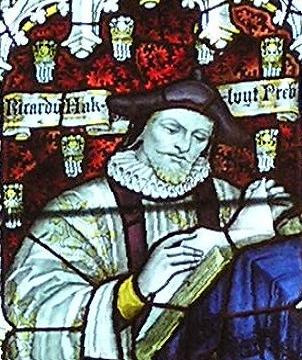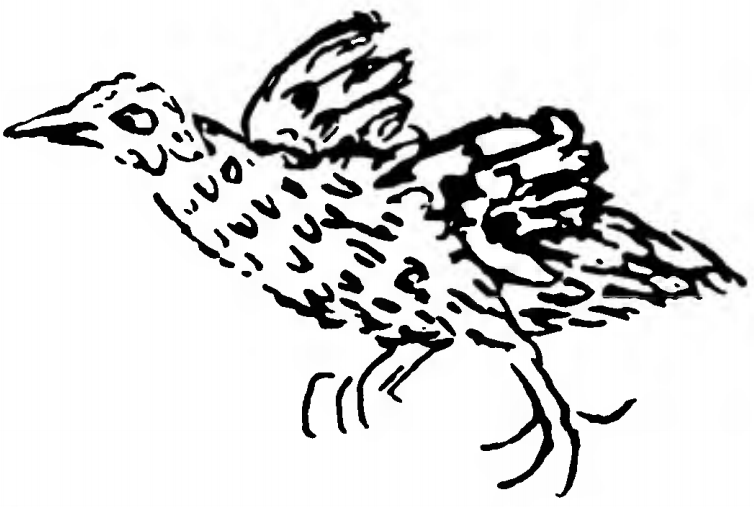|
Old Bridge, Svilengrad
Mustafa Pasha Bridge ( bg, Стар мост, ''Star most'') or The Old Bridge is a 16th-century arch bridge over the Maritsa in Svilengrad, southern Bulgaria. Completed in 1529, it was built on the order of the Ottoman vizier Çoban Mustafa Pasha. The bridge was the first major work designed by the Ottoman architect Mimar Sinan, and was part of a vakıf complex that also included a caravanserai, mosque, bazaar and hamam. The bridge is 295 m long, 6 m wide and has 20 or 21 arches.Pictures of Bulgaria. Settlements: Svilengrad'. Visited 16 April 2006.Balkan Travellers Along Suleiman the Magnificent's Bridge in Svilengrad''. Visited 12 January 2010. The English traveler Peter Mundy crossed the bridge on 14 May 1620, by when the neighbouring town was already known as "Mustapha Pasha Cupreesee" (Mustapha Pasha's Bridge): A flood destroyed some of the arches in 1766. Reconstruction was completed in 1809.Bridges in Bulgaria. Arch stone bridge over Maritsa River at Svilengrad town' ... [...More Info...] [...Related Items...] OR: [Wikipedia] [Google] [Baidu] |
Svilengrad
Svilengrad ( bg, Свиленград; el, Σβίλενγκραντ; ota, Cisr-i Mustafapaşa) is a town in Haskovo Province, south-central Bulgaria, situated at the border of Bulgaria, Turkey and Greece. It is the administrative centre of the homonymous Svilengrad Municipality. Geography Svilengrad is close to the road borders of Greece and Turkey (supposedly one of the largest road customs in Europe). Svilengrad is located ESE of Sofia and Plovdiv, South of Varna and Burgas, West of Edirne and North of the nearest Greek community Ormenio and Alexandroupoli in Greece. There is a higher level of employment than in surrounding villages. Most people work for customs and border related industries e.g. TIR servicing, hotels, border police, etc. The town centre has a pedestrianized high street mostly filled with cafes, bars, phone shops and hotels. The town has 3 DVD rental shops, two cinemas and a library. The Maritsa river flows through Svilengrad. The Evros regional unit o ... [...More Info...] [...Related Items...] OR: [Wikipedia] [Google] [Baidu] |
Bazaar
A bazaar () or souk (; also transliterated as souq) is a marketplace consisting of multiple small Market stall, stalls or shops, especially in the Middle East, the Balkans, North Africa and India. However, temporary open markets elsewhere, such as in the West, might also designate themselves as bazaars. The ones in the Middle East were traditionally located in vaulted or covered streets that had doors on each end and served as a city's central marketplace. Street markets are the European and North American equivalents. The term ''bazaar'' originates from Persian language, Persian, where it referred to a town's public market district. The term bazaar is sometimes also used to refer to the "network of merchants, bankers and Master craftsman, craftsmen" who work in that area. The term ''souk'' comes from Arabic and refers to marketplaces in the Middle East and North Africa. Evidence for the existence of bazaars or souks dates to around 3,000 Common Era, BCE. Although the lack of ... [...More Info...] [...Related Items...] OR: [Wikipedia] [Google] [Baidu] |
Bridges Completed In 1529
A bridge is a structure built to span a physical obstacle (such as a body of water, valley, road, or rail) without blocking the way underneath. It is constructed for the purpose of providing passage over the obstacle, which is usually something that is otherwise difficult or impossible to cross. There are many different designs of bridges, each serving a particular purpose and applicable to different situations. Designs of bridges vary depending on factors such as the function of the bridge, the nature of the terrain where the bridge is constructed and anchored, and the material used to make it, and the funds available to build it. The earliest bridges were likely made with fallen trees and stepping stones. The Neolithic people built boardwalk bridges across marshland. The Arkadiko Bridge (dating from the 13th century BC, in the Peloponnese) is one of the oldest arch bridges still in existence and use. Etymology The ''Oxford English Dictionary'' traces the origin of the wo ... [...More Info...] [...Related Items...] OR: [Wikipedia] [Google] [Baidu] |
Ottoman Bridges In Bulgaria
Ottoman is the Turkish spelling of the Arabic masculine given name Uthman ( ar, عُثْمان, ‘uthmān). It may refer to: Governments and dynasties * Ottoman Caliphate, an Islamic caliphate from 1517 to 1924 * Ottoman Empire, in existence from 1299 to 1922 ** Ottoman dynasty, ruling family of the Ottoman Empire *** Osmanoğlu family, modern members of the family * Ottoman architecture Ethnicities and languages * Ottoman Armenians, the Armenian ethnic group in the Ottoman Empire * Ottoman Greeks, the Greek ethnic group in the Ottoman Empire * Ottoman Serbs, the Serbian ethnic group in the Ottoman Empire * Ottoman Turks, the Turkic ethnic group in the Ottoman Empire ** Ottoman Turkish alphabet ** Ottoman Turkish language, the variety of the Turkish language that was used in the Ottoman Empire Products * Ottoman bed, a type of storage bed * Ottoman (furniture), padded stool or footstool * Ottoman (textile), fabric with a pronounced ribbed or corded effect, often made of silk or ... [...More Info...] [...Related Items...] OR: [Wikipedia] [Google] [Baidu] |
Everybody's Magazine
''Everybody's Magazine'' was an American magazine published from 1899 to 1929. The magazine was headquartered in New York City. History and profile The magazine was founded by Philadelphia merchant John Wanamaker in 1899, though he had little role in its actual operations. Mott, Frank LutherSketches of 21 Magazines: 1905-1930 p. 72-87 (1968) Initially, the magazine published a combination of non-fiction articles and new fiction stories. By 1926, the magazine had become a pulp fiction magazine and in 1929 it merged with '' Romance magazine''. In 1903, it had a circulation of 150,000, and Wanamaker sold the magazine for $75,000 to a group headed by Erman Jesse Ridgway. A series of muckraking articles called "Frenzied Finance" in 1904 boosted circulation to well over 500,000, and it stayed above the half million mark for many years. During America's involvement in World War I, circulation declined below 300,000. By the late 1920s, it had declined to about 50,000. Beginning i ... [...More Info...] [...Related Items...] OR: [Wikipedia] [Google] [Baidu] |
First Balkan War
The First Balkan War ( sr, Први балкански рат, ''Prvi balkanski rat''; bg, Балканска война; el, Αʹ Βαλκανικός πόλεμος; tr, Birinci Balkan Savaşı) lasted from October 1912 to May 1913 and involved actions of the Balkan League (the Kingdoms of Kingdom of Bulgaria, Bulgaria, Kingdom of Serbia, Serbia, Kingdom of Greece, Greece and Kingdom of Montenegro, Montenegro) against the Ottoman Empire. The Balkan states' combined armies overcame the initially numerically inferior (significantly superior by the end of the conflict) and strategically disadvantaged Ottoman armies, achieving rapid success. The war was a comprehensive and unmitigated disaster for the Ottomans, who lost 83% of their European territories and 69% of their European population. [...More Info...] [...Related Items...] OR: [Wikipedia] [Google] [Baidu] |
Battle Of Lule Burgas
The Battle of Lule Burgas ( tr, Lüleburgaz Muharebesi) or Battle of Luleburgas – Bunarhisar ( bg, Битка при Люлебургас – Бунархисар , tr, Lüleburgaz – Pınarhisar Muharebesi) was a battle between the Kingdom of Bulgaria and the Ottoman Empire and was the bloodiest battle of the First Balkan War. The battle took place from 28 October to 2 November 1912. The outnumbered Bulgarian forces made the Ottomans retreat to Çatalca line, 30 km from the Ottoman capital Constantinople. In terms of forces engaged it was the largest battle fought in Europe between the end of the Franco-Prussian War and the beginning of the First World War.Erickson (2003), p.102. Battle Following the quick Bulgarian victory on the Petra – Seliolu – Geckenli line and the capture of Kirk Kilisse (Kırklareli), the Ottoman forces retreated in disorder to the east and south. The Bulgarian Second Army under the command of gen. Nikola Ivanov besieged Adrianople (Edirne ... [...More Info...] [...Related Items...] OR: [Wikipedia] [Google] [Baidu] |
Hakluyt Society
The Hakluyt Society is a text publication society, founded in 1846 and based in London, England, which publishes scholarly editions of primary records of historic voyages, travels and other geographical material. In addition to its publishing role, the Society organises and participates in meetings, symposia and conferences relating to the history of geographical exploration and cultural encounter. It is a registered charity and a non-profitmaking institution administered by a voluntary team of council members and officers. Membership is open to all with an interest in its aims. The Society is named after Richard Hakluyt (1552–1616), a collector and editor of narratives of voyages and travels and other documents relating to English interests overseas. Foundation The Society was created at a meeting convened in the London Library, St James's Square, on 15 December 1846. Under the chairmanship of the geologist Sir Roderick Murchison, it established an eight-man steering group ... [...More Info...] [...Related Items...] OR: [Wikipedia] [Google] [Baidu] |
Peter Mundy
Peter Mundy ( fl. 1597 – 1667) was a seventeenth-century British factor, merchant trader, traveller and writer. He was the first Briton to record, in his ''Itinerarium Mundi'' ('Itinerary of the World'), tasting '' Chaa'' (tea) in China and travelled extensively in Asia, Russia and Europe. Life Mundy came from Penryn in south Cornwall. In 1609 he accompanied his father, a pilchard trader to Rouen across the Channel in Normandy, and was then sent to Gascony to learn French. In May 1611 he went as a cabin-boy in a merchant ship, and gradually rose in life until he became of independent circumstances. He visited Constantinople, returning to London and overland via Bulgaria, Sarajevo, Split, Venice, Chambéry and Paris with the English Ambassador Paul Pindar, and afterwards made a journey to Spain as a clerk in the employ of Richard Wyche. Following Wyche's death and a brief spell in the family Pilchard business, he returned to London and obtained employment on account of his l ... [...More Info...] [...Related Items...] OR: [Wikipedia] [Google] [Baidu] |
Turkish Bath
A hammam ( ar, حمّام, translit=ḥammām, tr, hamam) or Turkish bath is a type of steam bath or a place of public bathing associated with the Islamic world. It is a prominent feature in the culture of the Muslim world and was inherited from the model of the Roman ''thermae.'' Muslim bathhouses or hammams were historically found across the Middle East, North Africa, al-Andalus (Islamic Spain and Portugal), Central Asia, the Indian subcontinent, and in Southeastern Europe under Ottoman rule. A variation on the Muslim bathhouse, the Victorian Turkish bath, became popular as a form of therapy, a method of cleansing, and a place for relaxation during the Victorian era, rapidly spreading through the British Empire, the United States of America, and Western Europe. In Islamic cultures the significance of the hammam was both religious and civic: it provided for the needs of ritual ablutions but also provided for general hygiene in an era before private plumbing and served other ... [...More Info...] [...Related Items...] OR: [Wikipedia] [Google] [Baidu] |
Mosque
A mosque (; from ar, مَسْجِد, masjid, ; literally "place of ritual prostration"), also called masjid, is a place of prayer for Muslims. Mosques are usually covered buildings, but can be any place where prayers ( sujud) are performed, including outdoor courtyards. The first mosques were simple places of prayer for Muslims, and may have been open spaces rather than buildings. In the first stage of Islamic architecture, 650-750 CE, early mosques comprised open and closed covered spaces enclosed by walls, often with minarets from which calls to prayer were issued. Mosque buildings typically contain an ornamental niche ('' mihrab'') set into the wall that indicates the direction of Mecca (''qiblah''), Wudu, ablution facilities. The pulpit (''minbar''), from which the Friday (jumu'ah) sermon (''khutba'') is delivered, was in earlier times characteristic of the central city mosque, but has since become common in smaller mosques. Mosques typically have Islam and gender se ... [...More Info...] [...Related Items...] OR: [Wikipedia] [Google] [Baidu] |


.jpeg/1200px-Turkey_(68742801).jpeg)



